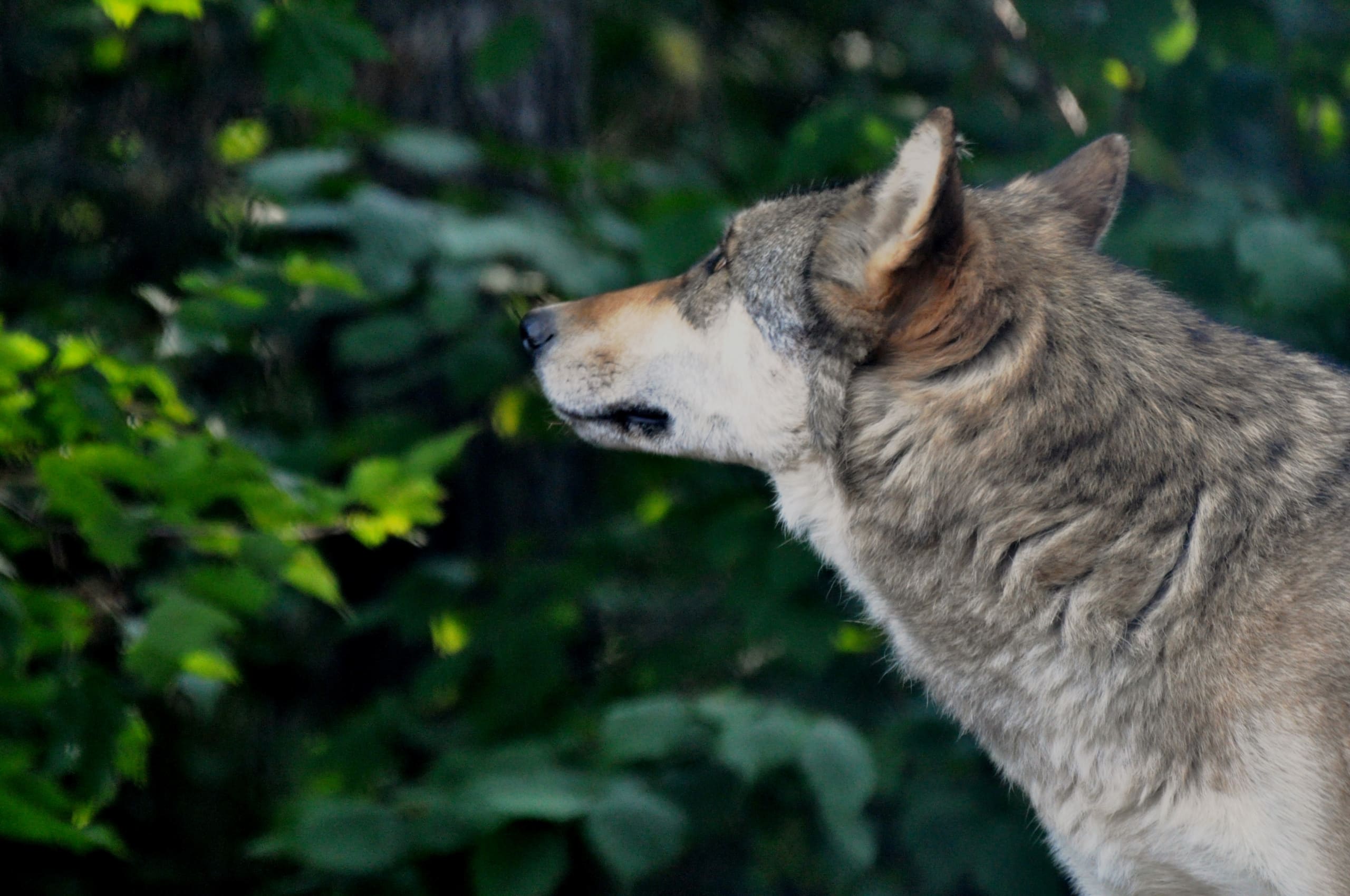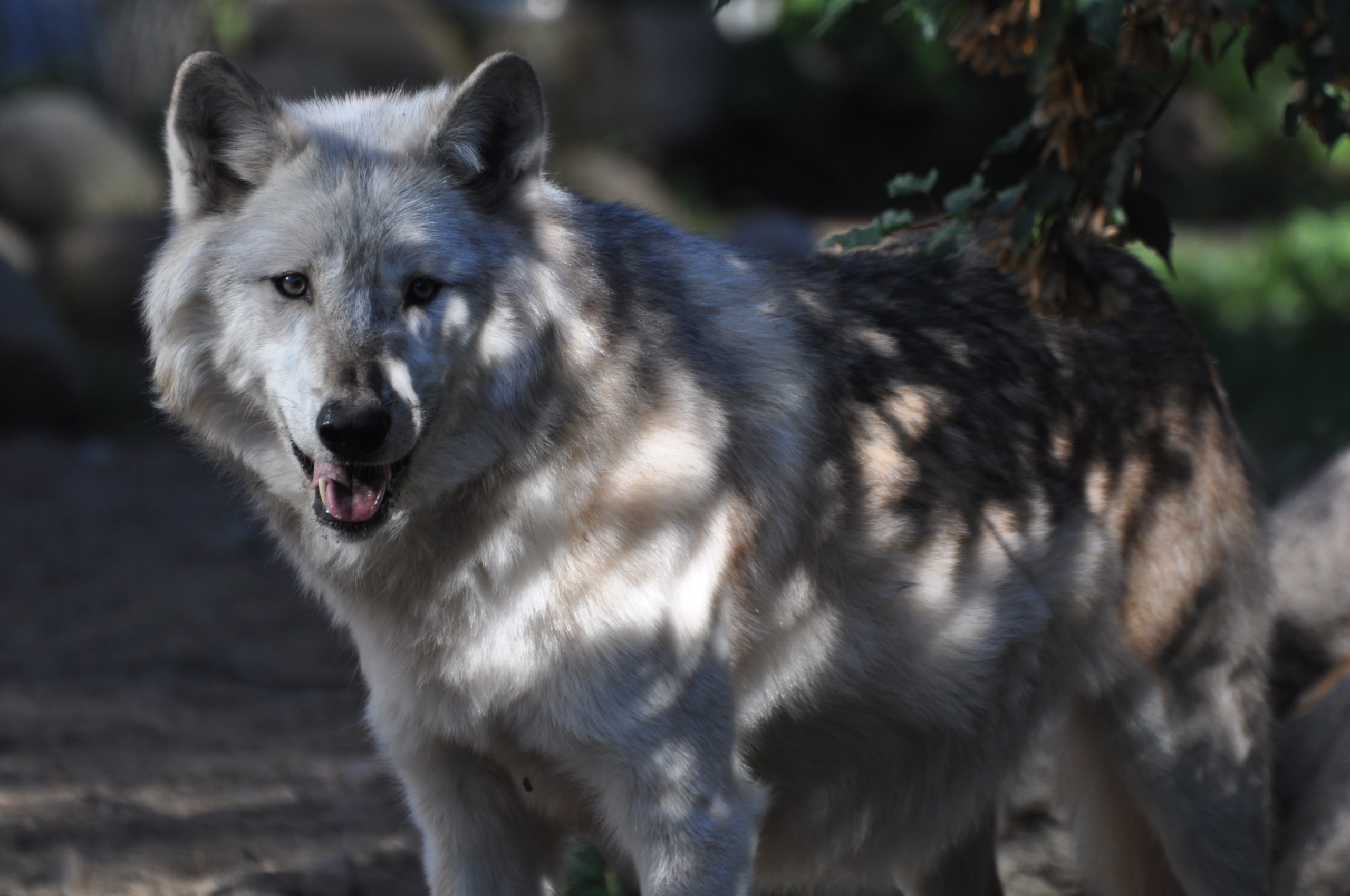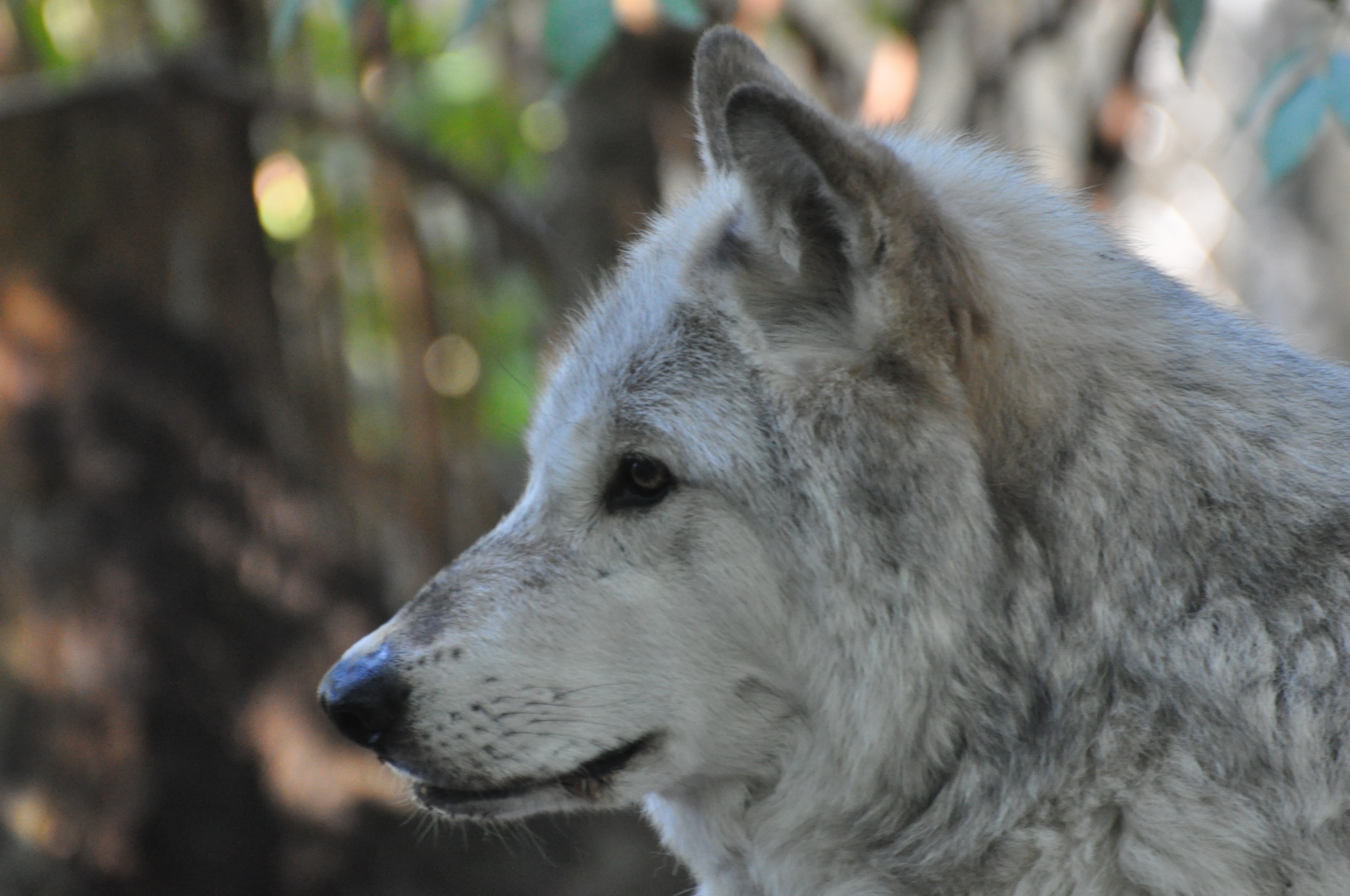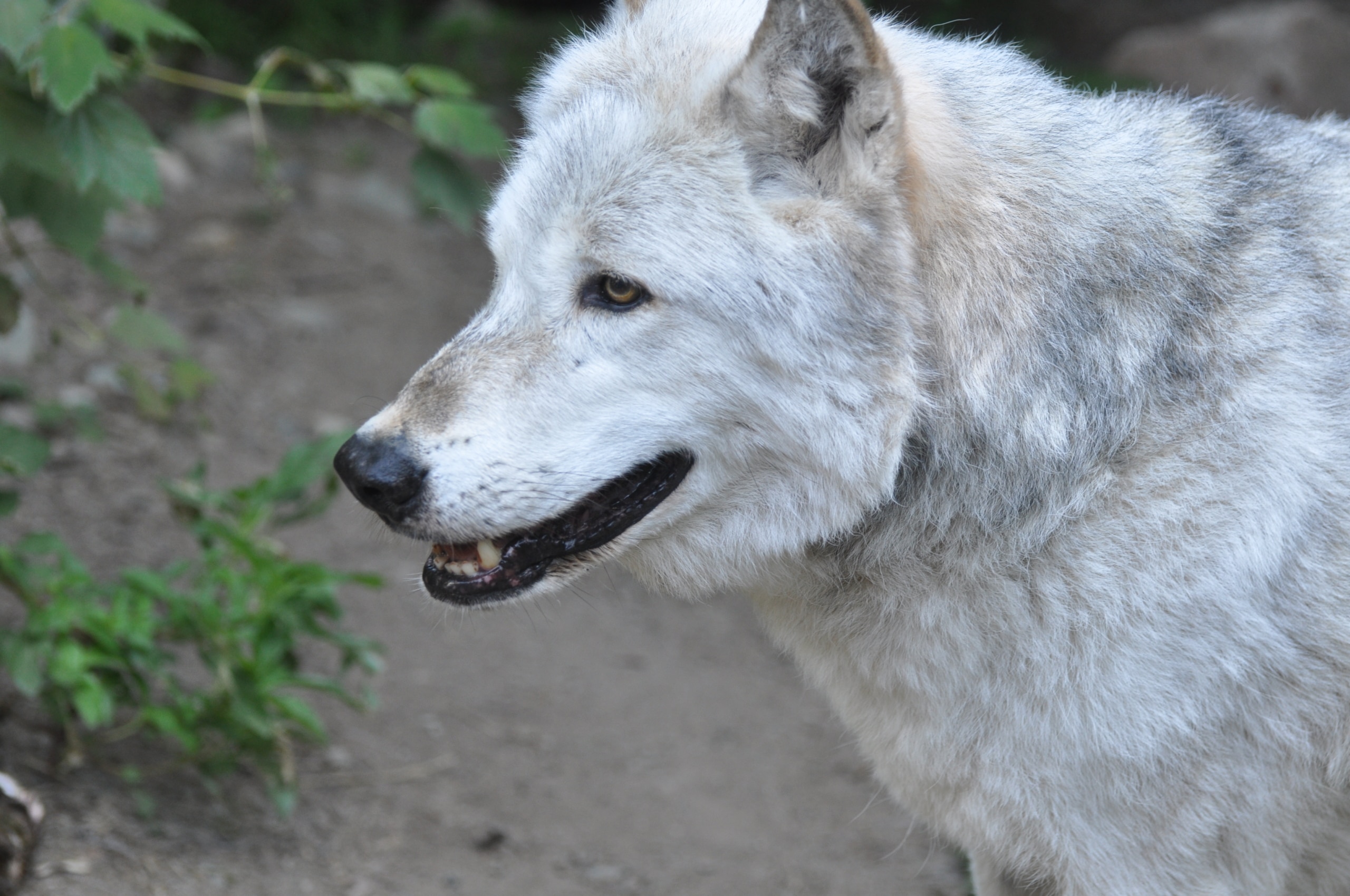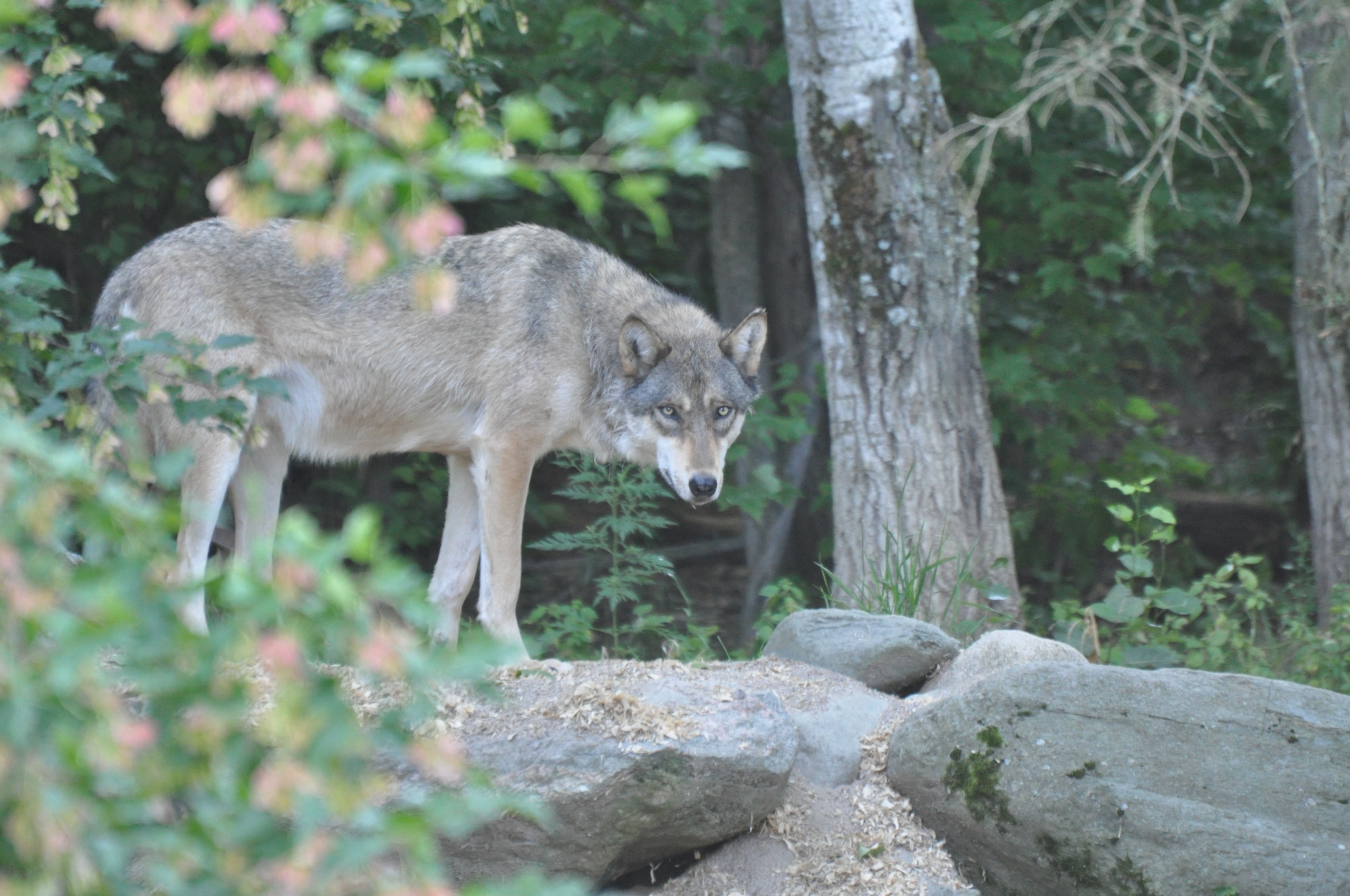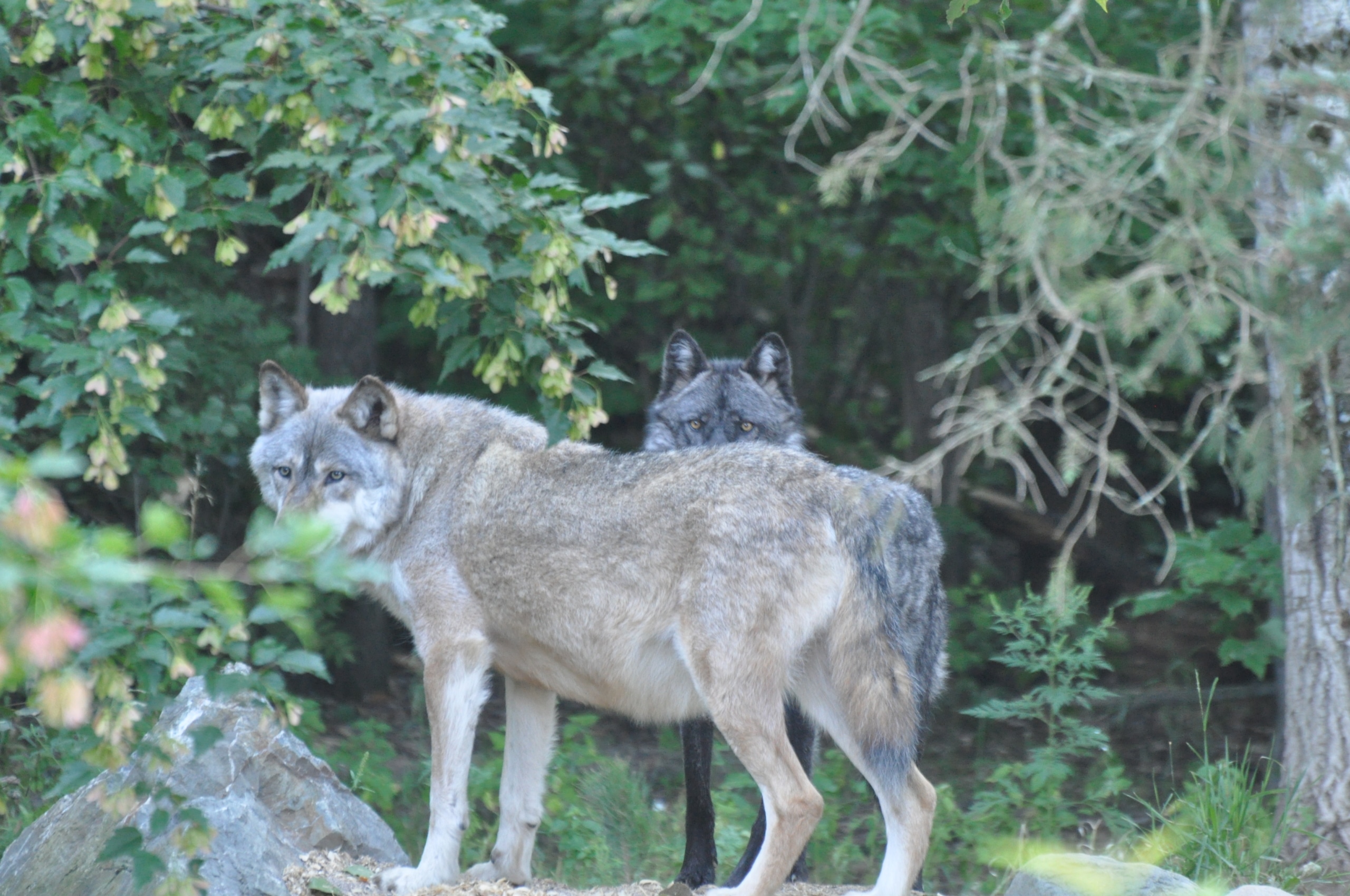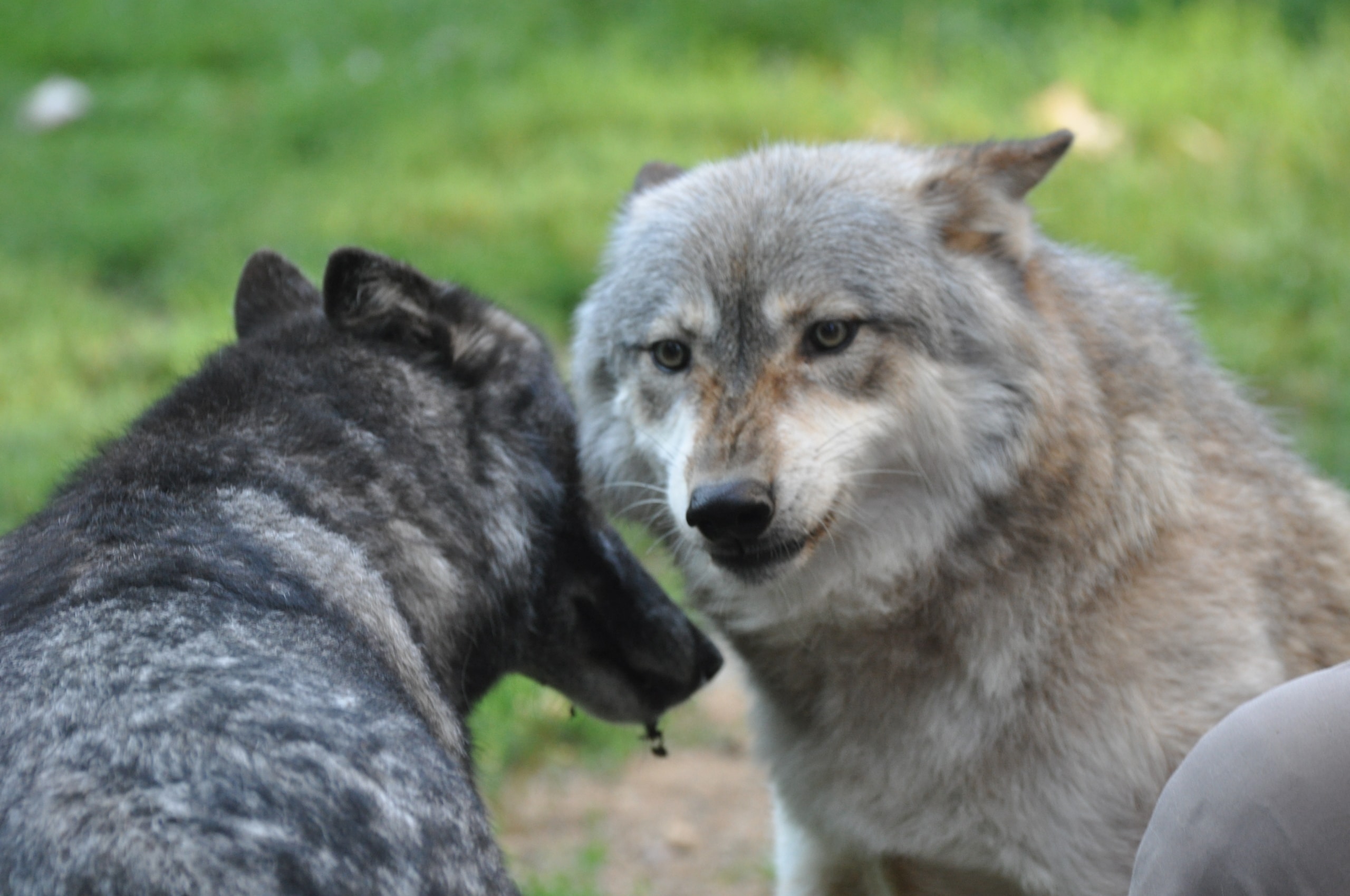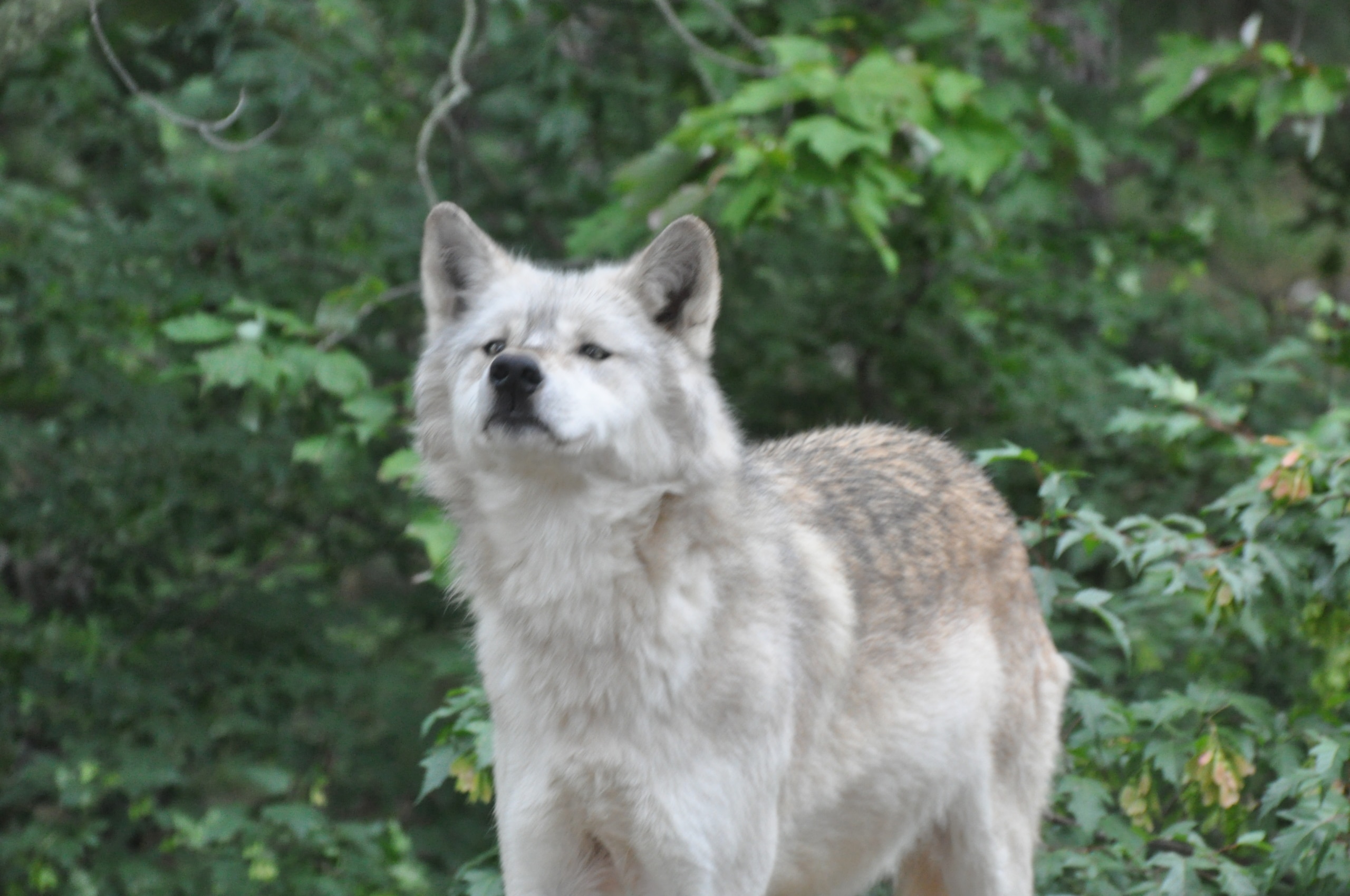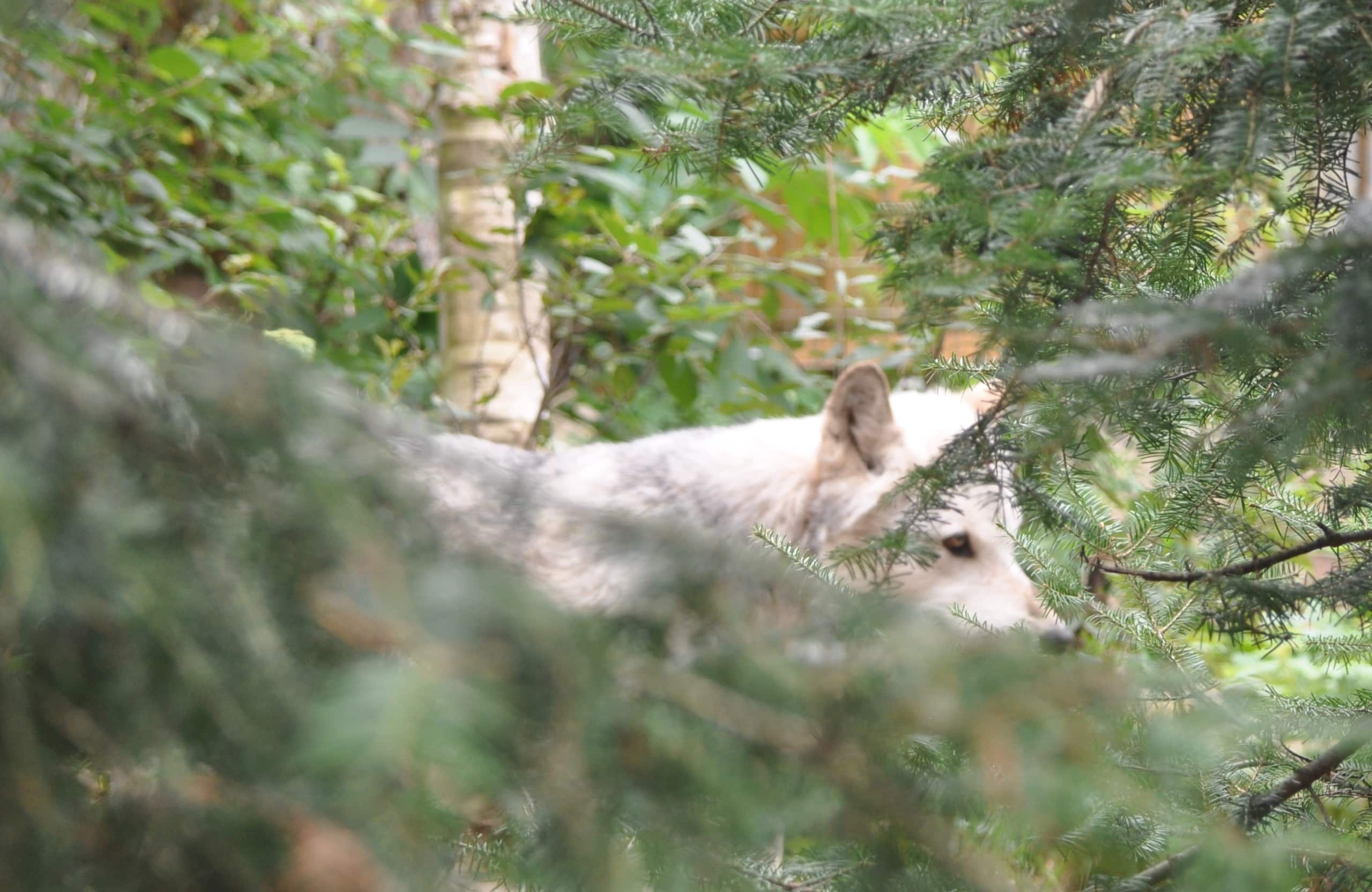Boltz has been showing an increased level of excitement due in part to the return of one of his favorite wolf care staff, Assistant Curator, Donna Prichard’s return to the Center. Donna was a significant part of the 2012 pup socialization process, and even though she spends her summers away from the Center, Boltz always associates her return with a positive experience. Wolves are social carnivores and the social bonds established as pups seem to have a life-long presence.
Archives
We all know animals pant when hot, but animals may become overheated by stressful situations. Denali has been facing a bit of anxiety as the fall approaches and Boltz and Luna seem to be increasing their activity. Activity is good; Activity keeps older animals fit, but sometimes the three-year old activity can be a bit more physical and bothersome to a middle-aged wolf. Denali also has the occasional redirected aggression from Aidan, his brother and pack leader. To sum it up, Denali is usually on the receiving end of a scruff bite, a ride-up, or some kind of force to bring his 136 pound frame to a subordinate posture. So, you may have heard me say…”when is a yawn not just a yawn, but an expression of anxiety”? We also have to say, when is a panting wolf just hot or is there more to the issue. These are the training details we incorporate for all of our wolf care staff, future pup care members and Wolf Watch participants. Our next Wolf Watch program is October 2nd, or join us for our Fall Equinox webinar on Wednesday, September 23rd, behavioral interpretation is the focus of our wolf care programs.
I do want to acknowledge that Grizzer has not been as visible on the webcams lately. This has less to do with Grizzer’s health and more to do with the pre-construction activity around the pack holding area. We have retained the services of summer educator, Travis Stoll, to assist with fence, pipe, tree and roof removal in anticipation of the expansion to the wolf lab. He has been surprisingly tolerant of the activity and is often found resting in the sand near the front of the pack holding area. We are impressed with the thickness of his winter coat, which is still soft and glossy, a good indication of health at 11 years of age.
When looking at this photo, some may not notice the subtle points that tell the story about the Exhibit Pack’s dynamics. It appears that two wolves are resting in the front of the wolf exhibit. But if you look closely, you will see one wolf is more confident than the other. The key is to identify body postures and slight signs of anxiety. The most common body posture we track is the position of the ears. I know I have said this many times before, but “Ears Pricked Forward” is a sign of confidence. Luna displays this posture while Denali has a more timid, “Ears Pricked and Turned Sideways” posture. It also appears that Denali has a slightly higher respiration rate, with his mouth partially open, likely panting. It could be the heat causing him to pant, but it might also be the fact that Luna is behind him. Often lower ranking wolves are cautious about having a higher ranking wolf behind them. When we teach people to interpret behavior, it’s these subtle nuances that are critical to becoming a keen observer of wolf behavior.
As we prepare for the expansion of our wolf lab for the 2016 pups and our older animals, we have been removing portions of fences, concrete slabs, and other in-the-way structures. This causes a great amount of noise and potential stresses for Grizzer. Volunteers and seasonal staff have been doing an amazing job at preparing our wolf yard for the construction, and as we have found, as long as we ignore Grizzer, he does fairly well with the commotion.
The following is written by Night at the Museum – Wolf Watch participants Noelle and Kara Holter
Boltz has an interesting relationship with the pack. He is the most stand offish. When we were observing through the fence during our behind the scenes program, Boltz waited until the other three wolves left before he approached for an ice cube treat. He would occasionally smell participants. His glare is extremely intimidating!
Boltz seemed to be the most independent of the group, being comfortable with being on his own.
The following is written by Night at the Museum – Wolf Watch participants Noelle and Kara Holter
Luna appeared to be running the show. She is clever, cunning, and very aware of the situation at hand. When one of the other wolves had a bone she wanted, she would pretend not to notice, then when they weren’t paying attention, she would quickly steal it and run off. Her patience usually paid off! Later, Boltz nervously retrieved the bone Luna had cached and took off up the hill when she was distracted.
The following is written by Night at the Museum – Wolf Watch participant Anna Toenjes
Aidan is greeted by the other wolves occasionally. Reinforcing his position as dominant male. The other wolves do not try to steal from him and even Luna takes his lip curls seriously. If Luna possesses something though, she’s fine with lunging into him. Luna greets him somewhat assertively and his ears are usually pricked forward but turned out in uncertainty. When Aidan had possession of the cow leg that was fed during the program, he only needed to growl/snarl once and Luna or Boltz would move along. He likely had the prized leg most of last night, until Denali had it this morning.
The following is written by Night at the Museum – Wolf Watch participant Anna Toenjes
Denali is comfortable in his pack role, greeting Aidan when appropriate and keeping Boltz below him when need be. Denali walks shoulder to shoulder with Luna and Boltz, tails wagging and faces are licked. He lets Luna push him around a bit. She can stand over him while he’s eating and steal food from him and he tolerates it. Most of the time he’s laid back and enjoys sprawling on the big rock under the white pine.
With only one wolf in retirement and having three enclosures to roam, we have noticed an increased amount of vegetation throughout the retired enclosures. There are times that staff need to search for Grizzer. Sometimes, he’s in the East Side Enclosure under a dense cover of Elderberry shrubs escaping the heat of the day. One staff person even witnessed him sleeping on his back with his legs up in the air, certainly a picture of relaxation. One thing Grizzer does well is relax. Especially with the wolf care staff giving him their full and undivided attention. When the pups come next year, the Pack Holding area near the wolf yard will be dedicated to pups, leaving Grizzer to roam his back habitat and the East Side Retirement enclosure. I suspect he will not be pleased with that management decision.

The International Wolf Center uses science-based education to teach and inspire the world about wolves, their ecology, and the wolf-human relationship.

